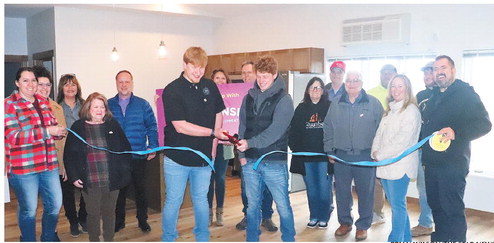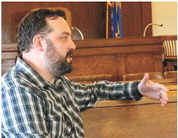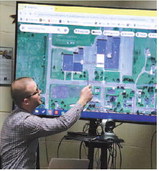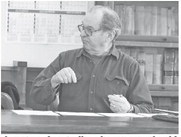Loyal School Board sets referendum question
The Loyal School Board has set the amount by which the school district will ask taxpayers to exceed the revenue limit this go-around. On the April 4 ballot, the school district will propose a five-year revenue cap exemption, asking for $900,000 in additional local taxation in 2024; $1.4 million per year in 2025 and 2026; and $1.5 million per year in 2027 and 2028; all to go toward operational expenses. The money will go toward normal school operational expenses, including maintaining current staffing and programming.
The referendum amount factors in a 3-percent wage increase for all staff in the first year, and a 2-percent wage increase for each of the following four years. The 3-percent number was based on the Consumer Price Index.
The current mill rate is 6.08, meaning that for every $1,000 in assessed property value, district residents will pay $6.08 in taxes to the Loyal School District this year. If the referendum passes, the mill rate is projected to peak in the second year. The projected mill rates are 7.14 in 2024, 8.98 in 2025, 7.95 in 2026, 8.06 in 2027 and 7.78 in 2028. The 8.98 would still be lower than several surrounding districts’ rates. Area districts’ current rates are: Abbotsford 8.68, Spencer 8.47, Owen-Withee 7.60, Granton 7.39, Greenwood 7.24, Colby 7.04, Loyal 6.08 and Neillsville 5.07.
The board spent an hour-and-a-half last Wednesday talking through different referendum proposals, wanting to choose the option that would keep the district from suffering too large a deficit in any one year, but also the option most likely to succeed after the school district’s operational referendum last November failed by 84 votes.
The last referendum also asked for $6.7 million total; however, it was divided among the years differently. That one asked for $1.1 million in the first year and $1.4 million for each of the following four years. That referendum was also for operational expenses, with the exception of part of the first-year money going to maintenance projects, including repaving the elementary parking lot and replacing the storm sewer line underneath it, paving the west-side parking lot and circle drive, and repairing the roof over the 1997 portion of the building.
The new referendum question does not have any maintenance projects included in it. The reason the overall amount stayed the same despite no maintenance projects is the school’s enrollment turned out to be lower than what was projected when the school set its November referendum question. The school district went from a membership of 515 in September 2021 to 485 in September 2022. With the school district receiving approximately $10,000 in state aid per student, the loss of 30 students equals a loss of $300,000 in revenue. The school district is asking for the same amount in this coming referendum in an effort to recoup some of the lost revenue.
If the referendum were to fail, the district would experience a much larger loss in revenue, though. The district is in the last year of a five-year referendum that authorized the district to exceed the revenue limit by $675,000 each year. Before that, the district was under another referendum. Without the April referendum passing, the district will lose $675,000 in revenue each year and will have to make up that difference. The school district’s fund balance is currently sitting at about $1.4 million, so it would only take about two years to drain that.
The district would need to look for ways Referendum, from page 1
to generate more revenue and/or find areas to cut. For every dollar the Loyal School District spends, $0.74 comes from state aid and $0.26 comes from local taxes.
“So three-fourths of our funding comes from the state. It’s very difficult when we’re not given additional aid. It’s very difficult to raise more,” said district bookkeeper Julie Wurtz. “We could start charging registration fees again, but that’s only going to bring in about $10,000. Or we could start charging for sporting events but that’s only about $7,000. And if the current referendum drops off, that’s $675,000 we have to make up, at least.”
With options for generating additional revenue quite limited, the district would have to look to reduce expenses. One of the most immediate options would be to freeze pay steps.
“We have frozen pay steps before; it’s been years but we have done it. It was prior to Act 10 (in 2011),” said Wurtz.
District administrators and board members also have made reference to potentially cutting staff positions and/or programs in order to the balance the budget in that scenario.
Also, “if it does not pass, we will have to do short-term borrowing to get through, probably $1 million. Otherwise I won’t be able to make our November payroll,” Wurtz added.
She said the last time the district had done short-term borrowing was before 2011.
Setting the referendum amount In setting the referendum amount, one of the biggest things the school board considered was keeping the fund balance relatively stable. Board president Tom Odeen stressed the need to not allow that balance to dip too low, or the district could run the risk of going in the red should an unforeseen capital expense come up.
“We have to be mindful of the fund balance. Right now we’re sitting at $1.4 million-plus, which is about 14 percent of the overall budget. In 2014, we set a policy that we wanted to work toward maintaining at least 15 percent of our total operational expenses in the fund balance. So we have to keep that in mind and what it does going into years two, three and four,” said Odeen.
The district is expected to end the 2022-23 budget year with a fund balance of $1,425,991, which is 13.88 percent of the annual operating budget. Under the proposed referendum, the district is projected to finish the 2027-28 budget year with a fund balance of $1,532,646, or 14.42 percent of the annual budget. The district will then need to pass another referendum in order to maintain its current offerings.
Considering that the district will need to go to referendum again in five years anyway, the board briefly discussed asking for recurring referendum, meaning the district would be authorized to exceed the revenue limit by a set amount each year ad infinitum.
Middle/high school Principal Doug Dieckman said the district should look at the long game, regardless of if that meant a recurring referendum or not.
“We’ve been under 10 years of referendum and most likely we will be for 10, 15 or 20 more. We’re looking at three or five years now but we know it will go more. So we might want to take this opportunity to build the fund balance. If we do that, we can sustain a plateaued amount for a longer time. There is some strategizing to looking not only at five, but 10 or 15 years from now,” he said.
The board agreed, but was not keen on the idea of a recurring referendum.
“Recurring, I think, would be a tough sell,” said board member Dennis Roehl.
“And eventually that won’t be enough,” added fellow board member Dave Clintsman.
“So then you would have to do a non-recurring referendum on top of the recurring referendum,” said Wurtz.
“You would have to pick a higher number to sustain it,” said Dieckman.
But with a higher number, the board felt they ran a greater risk of people rejecting the revenue cap exemption.
The board also looked at a three-year referendum as opposed to five years. Clintsman questioned whether it would be easier to convince people to agree to a three-year commitment, as the overall amount would be less. However, if the board were to do a three-year referendum, in year four the fund balance would dip down to only 3 percent of the district’s overall budget. So, the board would need to pass another referendum before then, anyway. The consensus was the board didn’t want to have to have this discussion again in two years. They didn’t want to keep coming back to the well of taxpayer funding, so they decided to stick with a five-year referendum.
The board then had to decide to increase the staff’s salary by 2 percent, 3 percent or 4 percent per year, which would influence how much they needed to ask the taxpayers for. The board decided to plan on increasing the staff’s salary by 3 percent the first year and 2 percent for each of the following years.
Another consideration was whether to factor in an increase in state per-pupil aid. Some of the scenarios Wurtz put together assumed an increase of $150 per pupil, which would equal approximately $72,750 in additional revenue for the district, assuming an enrollment of 485.
“We haven’t gotten an increase for the last two years. It’s a biennial budget, so it runs for 2023 and 2024. We’re hoping to get a per-pupil increase, but there’s no guarantee,” said Wurtz.
“Debby (Brunett, advisor from Baird, the district’s financial services consultant) thinks it may be $100 to $150,” said District Administrator Chris Lindner.
Gov. Tony Evers proposed increasing the per-pupil aid in his 2023-24 budget, but it will be up to the State Legislature to decide.
Dieckman advised planning conservatively. “If we plan for there not to be and there is some, that helps on the backside of year six, seven, et cetera,” he said.
The board agreed not to include a per-pupil increase in their budget calculations. Board members also weighed a few options of how to divvy up the $6.7 million across the five years, including asking for the same amount every year, but in the end decided that a graduated increase might be more palatable to voters.
Since the board opted to change the referendum question from what they had originally posted, they met again Monday to officially vote to approve the new ballot question.





